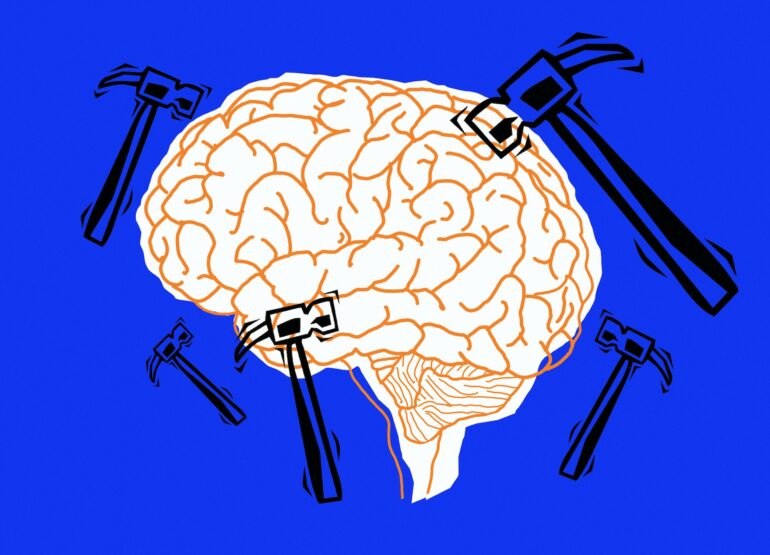The Research Brief is a short take about interesting academic work.
The big idea
Using a brain implant that can record neural signals over many months, my research team and I have discovered objective biomarkers of chronic pain severity in four patients with chronic pain as they went about their daily lives.
Pain is one of the most important and basic subjective experiences a person can have. While there is plenty of evidence that perception of pain takes place in the brain, there is also a major knowledge gap regarding where and how pain signals are processed in the brain. Even though pain is universal, there has not been a way to objectively measure its intensity.
Most prior studies on the brain signals responsible for pain have relied on laboratory experiments in artificial environments. Until now, most research on chronic pain has used indirect measures of brain activity such as functional magnetic resonance imaging or electroencephalography. Furthermore, although doctors widely recognize that chronic pain is not just an extension of acute pain – like stubbing your toe – it remains unknown how the brain circuits behind acute and chronic pain relate to each other.

Chronic pain can be debilitating.
Catherine McQueen/Moment via Getty Images
Our study was part of a larger clinical trial aimed at developing a new brain stimulation therapy to treat severe chronic pain. My team surgically implanted electrodes in the brains of four patients with post-stroke pain and phantom limb pain to record neural signals in their orbitofrontal cortex, an area of the brain associated with planning and expectation, and cingulate cortex, an area associated with emotion.
We asked the patients about their pain severity levels several times a day for up to six months. We then built machine learning models to try to match and predict each patient’s self-reported pain intensity scores with snapshots of their brain activity signals. These brain signals consisted of electrical waves that could be decomposed into different frequencies, similar to how a musical chord can be broken down into individual sounds of different pitches. From these models, we found that low frequencies in the orbitofrontal cortex corresponded with each of the patients’ subjective pain intensities, providing an objective measure of chronic pain. The larger the shift in low-frequency activity we measured, the more likely the patient was experiencing intense pain.
Next, we wanted to compare the relationship between chronic pain and acute pain. We examined how the brain responded to short-term, intense pain caused by applying heat to the patients’ bodies. Based on data from two participants, we found that the anterior cingulate cortex was more involved in processing acute pain than chronic pain. This experiment provides the first direct evidence that chronic pain involves information-processing areas of brain distinct from those involved…



